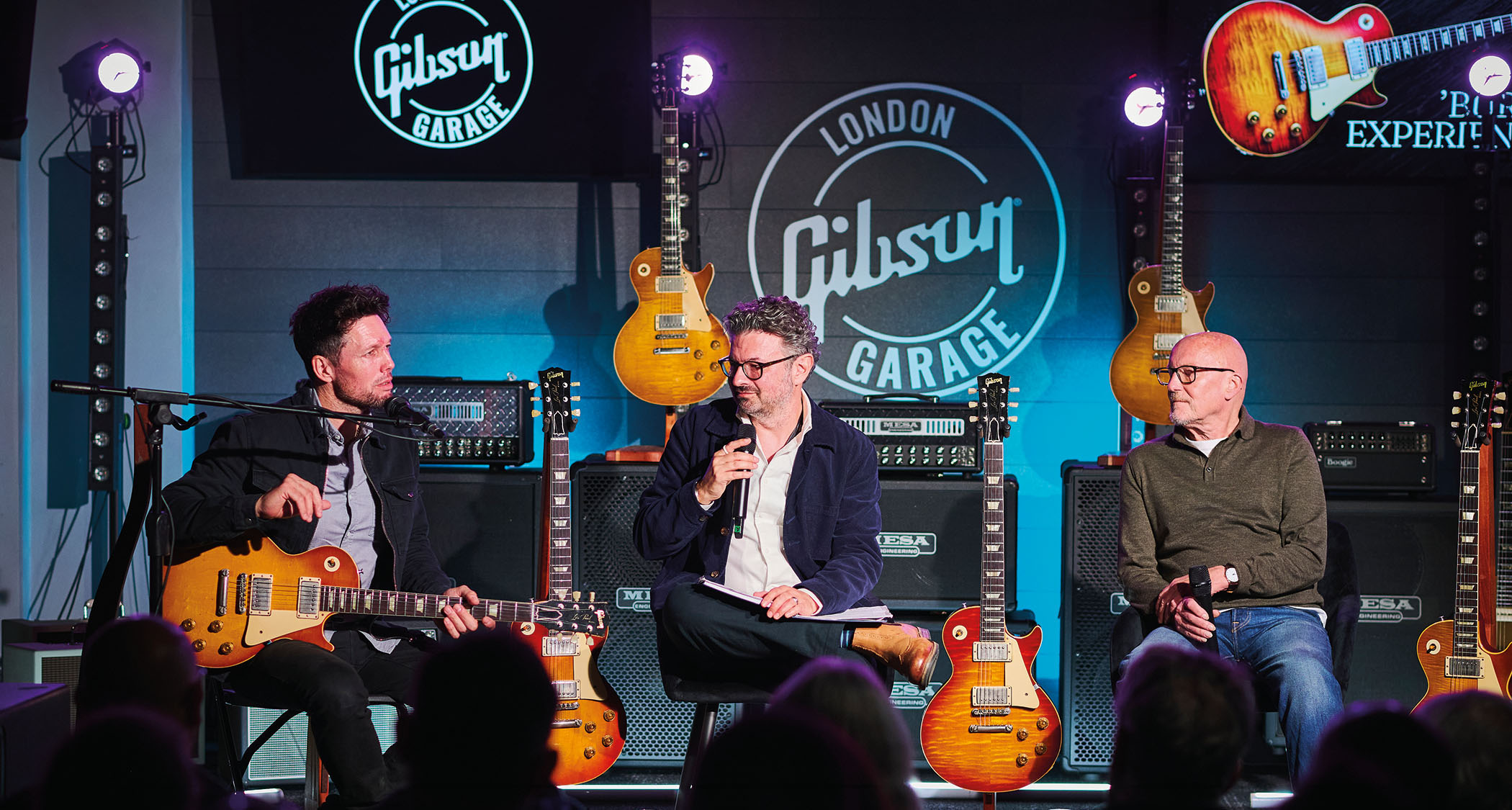Cesar Gueikian: “Being at the forefront of innovation and evolution has been part of Gibson heritage for almost 128 years”
Under new leadership, Gibson has got its mojo back. We met up with brand president, Cesar Gueikian, to find out where guitar design is going next at the Nashville guitar giant
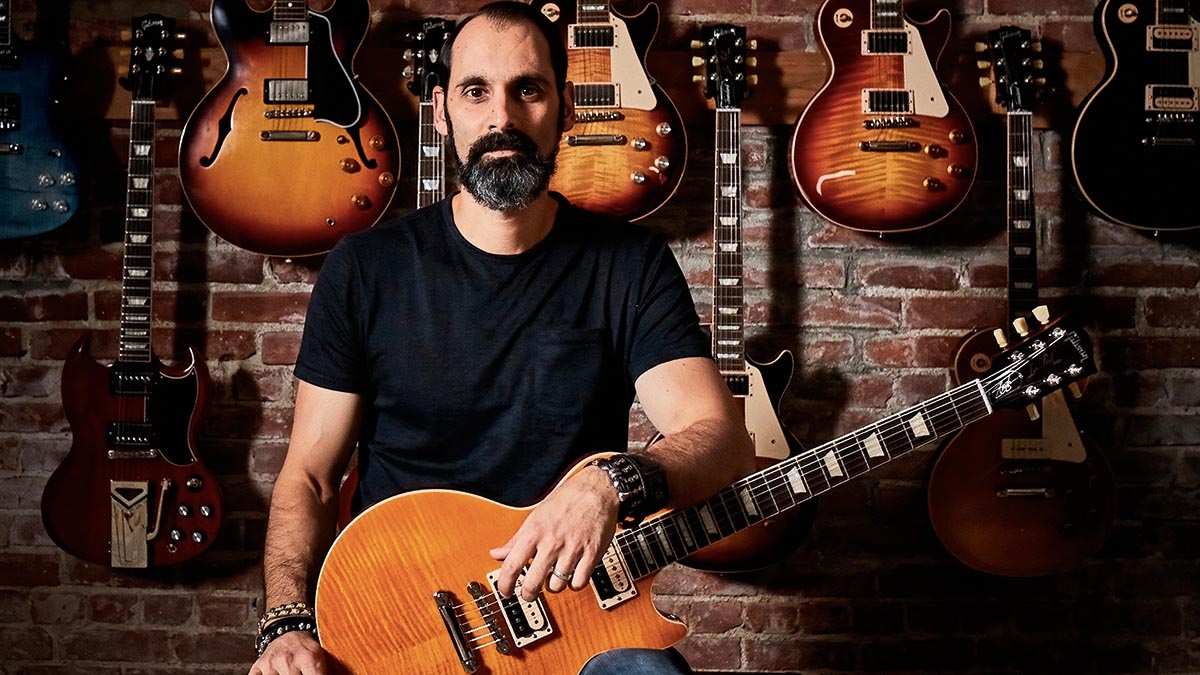
While under previous management, Gibson tried to introduce novel features such as robo-tuners and brass nuts to its 2015 guitar range, something that gave the company a bloody nose in the court of public opinion. Chapter 11 bankruptcy followed, toppling CEO Henry Juszkiewicz from his throne at the head of the company after 32 years.
Since then, under the leadership of JC Curleigh, the company has focused on the fundamentals of what turned people on to Gibsons in the first place. And a heavily revised and simplified product line-up saw classic mojo given pride of place. The Les Paul Standard ’50s, for example, delivered the vibey, heritage-rooted experience that a lot of people wanted from the company.
Innovation wasn’t abandoned, but it became more low-key and cool in the form of the company’s Gibson USA Modern series guitars. While an ill-thought-through decision to drive a JCB over rejected surplus examples of the reviled Firebird X had bad optics, the public got the point.
Gibson and its guitars were in a new era. But with the ship of Gibson seemingly steadied on a promising course, questions remain about the future of guitar design at the company. What does innovation mean for Gibson now? Will we see entirely new models or just cautious reworkings of classics? What will the recently established Murphy Lab be developing next in terms of authentically aged guitars?
And, following the launch of Gibson’s affordably priced Generation acoustic guitars, will we see more instruments inspired by lost blueprints from the ’50s and ’60s come to light in the near future?
To answer these questions and more, we caught up with brand president, Cesar Gueikian, to get the skinny on what’s new in Nashville.
The Generation acoustics with the additional soundhole, or ‘Player Port’, have just hit the market. What kind of player are you trying to appeal to with them?
All the latest guitar news, interviews, lessons, reviews, deals and more, direct to your inbox!
“Those were really built over a two-year period, working in the Gibson Lab. [The aim was] to give a more accessible entry into a Gibson acoustic, with features that would appeal primarily to young generations of players, hence the collection title. Also, at the same time, we wanted to provide something different for [established] players who might already have a couple of guitars.
“Bringing the Player Port onto the guitar, having slim necks that are easy to play, great tonewoods, plus have the guitar made in the USA by the same hands that make all our Gibson acoustics, gave us that ability to appeal to young generations of players, at an accessible price point. And also make it an interesting alternative, a new sonic experience, for more experienced players.”
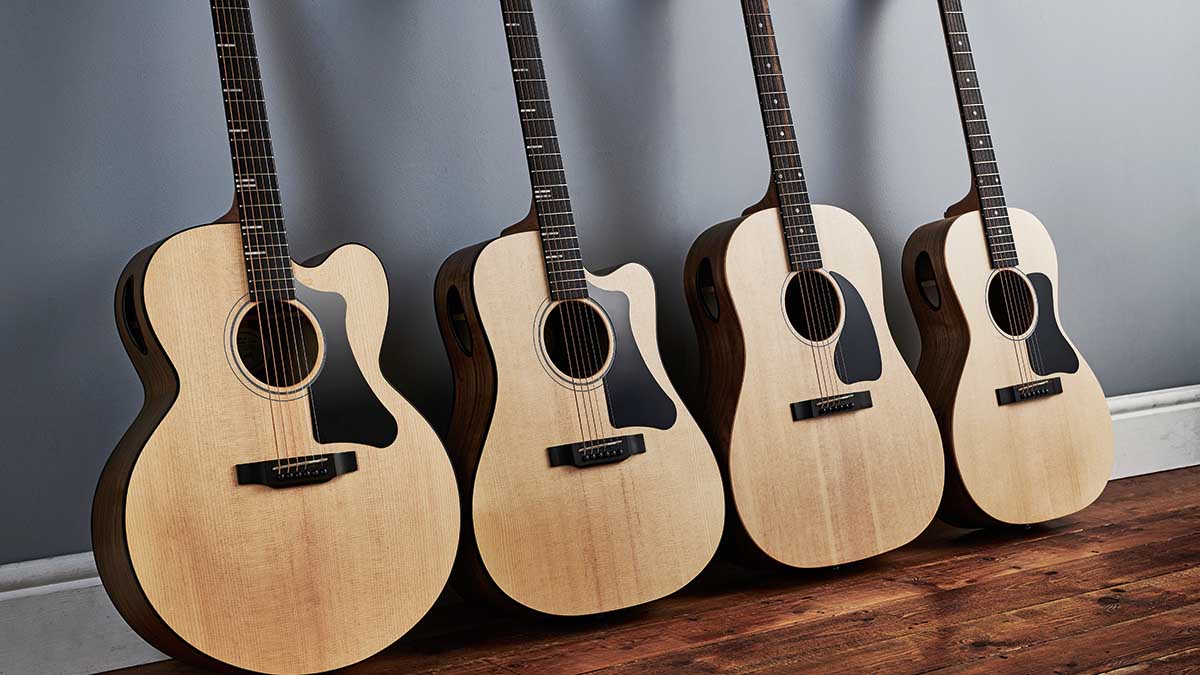
The idea for the Generation acoustics was inspired by an unused design from the 1960s. Tell us more about that.
“We borrowed [the Player Port concept] from a 1964 blueprint that we had in our archives. That blueprint was of a J-45 that was originally titled the ‘J-45 Modern’. It had a sound port on the edge of the guitar but on the bottom bout. We built that guitar, exactly as it was on the blueprint, first – just to put ourselves in the mindset of the Gibson team, back in the golden era, when they thought of the concept. It had a floating bridge and it had that soundhole on the upper edge of the guitar, but it was where your arm normally rests, or where your body is clasping the guitar…”
So you moved the Player Port to the upper bout then used existing body shapes as the basis for the current Generation range. What was the goal in doing that?
“The intention was you could ‘hear more of you’. And you really can. If you A/B the Generation collection guitar against your other acoustics, it’s almost like having your own in-ear monitors. That’s how a lot of our artists describe it as well.”
Are there any other unused blueprints for Gibson guitars from the ’50s and ’60s that hold promise?
“We do have other designs that were never put into production: really interesting designs. They were doing so much at a time where the modern techniques and production capabilities weren’t there. And I think they were further ahead in innovation and design than what could really be put into production. So that’s the good news because we still have all those archives.
In 1957 we designed the Explorer, the Futura, the Moderne, the Flying V. At the time, people said they were too ahead of their time. But that never stopped Gibson and won’t stop us from continuing to think about evolution, innovation
“We are working on a few now and have set up a Gibson Lab [to research the possibilities]. We have 120 years of innovation – maybe there were a couple of decades where there wasn’t much done, through the ’80s and ’90s. Even so, there were things like the RD design and some of the concepts that came in the 70s and the ’80s. Even in the 1930s, with guitars like the ES-150 of Charlie Christian, there was innovation. In electronics as well, Gibson created the P-90 and the humbucker.
“To continue that tradition, we set up the Gibson Lab. It’s all about innovation, testing, research, development. That’s where we are now – testing, prototyping, building, putting things in the hands of artists. Testing with some concepts that were designed in the golden era and were never put into production.”
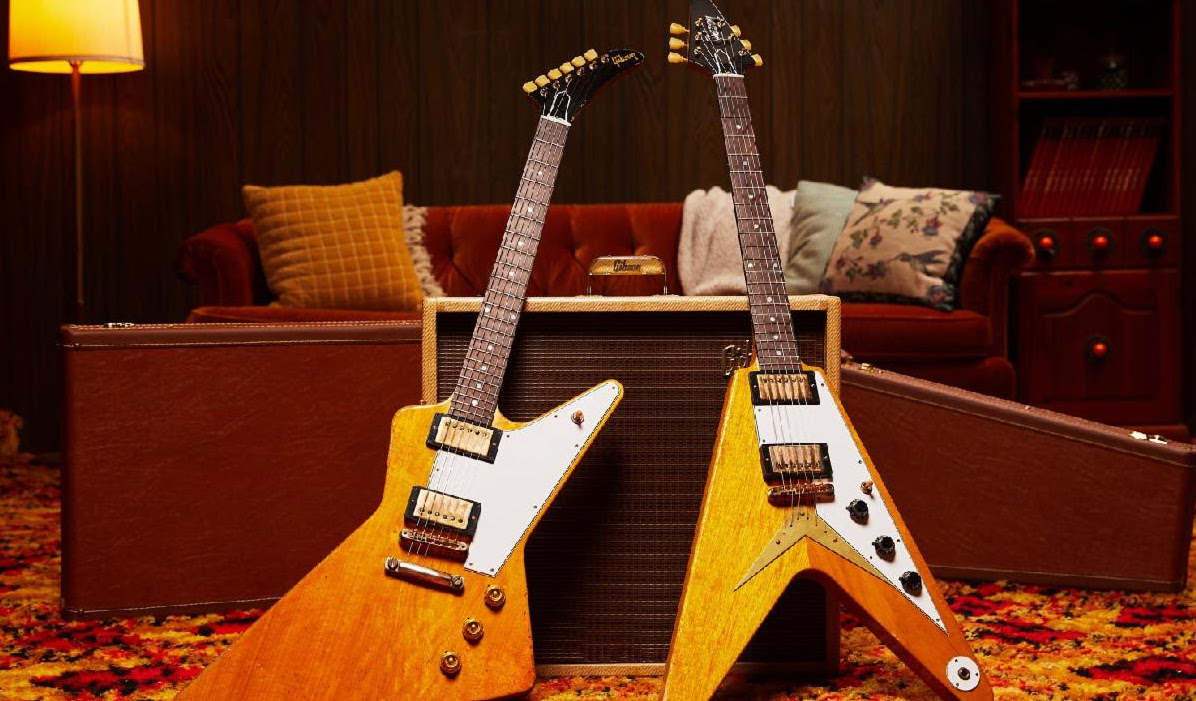
How happy are you with the overhaul of Gibson’s product line in the past couple of years? What were the biggest challenges?
“One of the first things JC and I talked about was the need to ‘simplify to amplify’. It was a bit complicated to understand the offering of guitars [as it stood before]. We designed the concept of the Original collection, and the concept of the Modern collection [in both] electric and acoustic. Then with Gibson Custom [it was] Historic and Modern, in electric and acoustic. So it is easy to understand.”
Launching entirely new products is always a risk, especially for brands with a lot of heritage. How much of a priority is developing new guitar models at Gibson?
“I think it is incredibly important. Being at the forefront of innovation and evolution has been part of Gibson heritage for almost 128 years, whether it was using violin-making techniques for carving tops when Orville started making mandolins and then guitars, for example. If you look at the instruments he made in the late 1800s, certainly 1900s, they were also ahead of their time. Inventing the truss rod, so that you can slim down the necks…
We take our time because we know anything we bring to market has to be at the expectation and quality of a Gibson
“In 1957 we designed the Explorer, the Futura, the Moderne, the Flying V. At the time, people said they were too ahead of their time. But that never stopped Gibson and won’t stop us from continuing to think about evolution, innovation… Gibsons are not just a guitar, they are a Gibson guitar, and we need to always keep that in mind. That comes with a huge responsibility and an opportunity to continue to evolve through the Gibson Labs.”
Have you considered launching an entirely new body shape or family of guitars?
“We are working on a few things. You will see in the next couple of months, particularly with one. We are getting inspired by our original archive, something that was never made – but, at the same time, also creating a couple of new things, one of which we are working on with a very famous artist.”
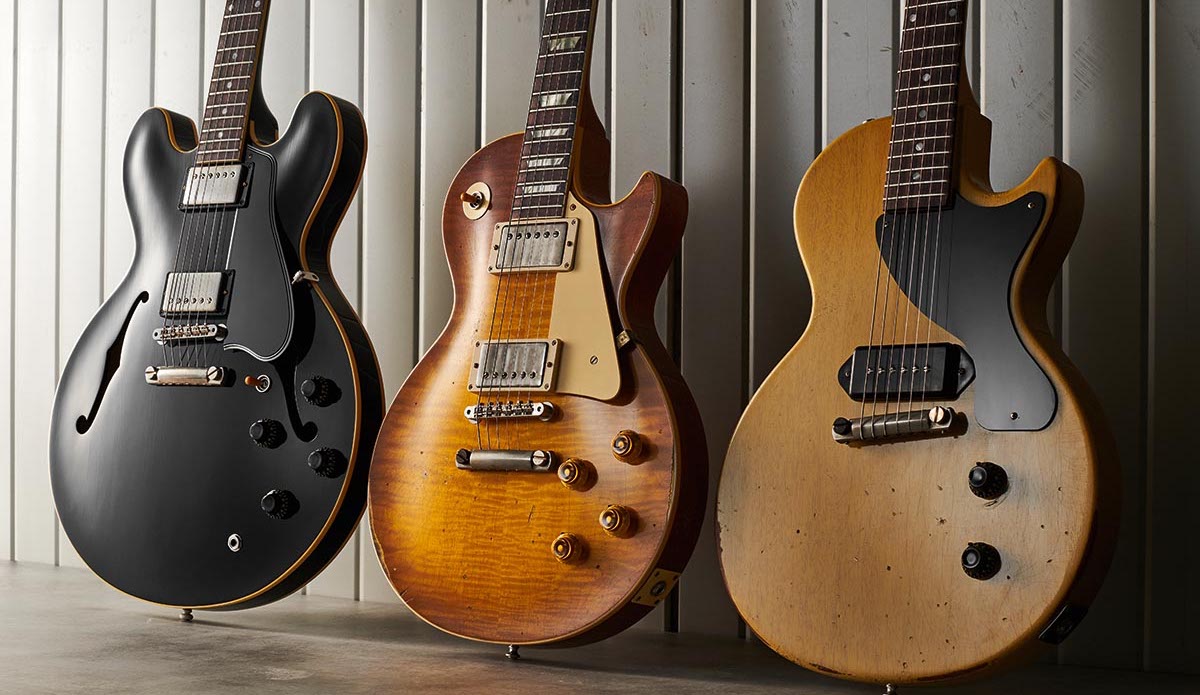
Gibson still owns some heritage guitar brands, such as Dobro, that we haven’t seen much of for a while. Any interesting stuff in the pipeline for resonator guitars?
“We have been getting organised and are now setting up – starting with the Custom Shop – to create a new collection of mandolins, archtops, banjos and resonators. We are working on prototypes to provide a wider offering at different price points of what ultimately will be a larger Bluegrass collection. I think it is very important to us because that takes us back to our original start, our original DNA, that Orville started, so it is also a bit of a passion project.
“Some of the concepts we might be bringing to market today, we might have been working on in the background for two years. We take our time because we know anything we bring to market has to be at the expectation and quality of a Gibson.”
We are prototyping, in the Gibson Lab, a future series of acoustic guitars for the Murphy Lab
Turning to the Custom Shop, how do you see the aged ‘Murphy Lab’ guitars evolving from here?
“The Murphy Lab was two years in the making before we ended up coming to market in March 2021. We started with a limited offering and grabbed a fraction of the ‘greatest hits’ to apply different treatments from ultra-light ageing to ultra-heavy. So that has been a very exciting start.
“The offering will evolve and change – and we’ll continue to put in the artist runs that are aged recreations of the originals. Those will go through the Murphy Lab because that is the only place where we age instruments. We are prototyping, in the Gibson Lab, a future series of acoustic guitars for the Murphy Lab.”
Quality control at Gibson drew flak under the previous management. How are you approaching that side of things now?
“Quality is still not just about the way the guitars are built, it is also what we are making – making the guitars in the right collections, with the right set of features that make it a Les Paul Standard, for example. So it starts there and then it goes into how we make them, creating this modern-day concept of a ‘craftery’ [Gibson’s term for its manufacturing centres], which is a celebration of craftmanship, so we keep that balance.
When it comes to quality, it is our obsession, so it is one of the areas where we are investing heavily
“We brought in Jeremy Freckleton, a manufacturing production expert [to lead] the production team in our crafteries. Then we put in a quality team… If you watch The Process on Gibson TV, you get a sense of how involved the process is to make a Gibson guitar.
“By organising a centralised quality team that is not just [responsible for localised quality control] in Bozeman, for example, or at Gibson USA or in the Custom Shop… we have a team that is a centre of excellence, sharing ideas, working across different crafteries, including in China for Epiphone. That quality team is now in service to every brand, to every category, to every collection, and has the quality-check at every step of the process of making a guitar.
“Separately, we also created our own training centre. We have incredible luthiers –from Jim DeCola and Keith Medley to Tom Murphy – who are part of the training process. When it comes to quality, it is our obsession, so it is one of the areas where we are investing heavily.”
What is your favourite guitar that Gibson is making right now?
“That’s like asking me who is my favourite child [laughs]. It’s a hard one, so I don’t think I can. I have 153 guitars in my collection, 90 per cent of which are Gibsons. I have a lot of Spanish guitars. I have been playing the Les Paul Modern a lot at home and I really enjoy the features, like the ability to split the pickup from a humbucker into a single coil.
“I like the access, the shaved profile of the back of the neck. At the same time, I also like the originals and I have a big collection of golden-era Gibsons, and a lot of the new things or prototypes we are doing. But I have been playing the Les Paul Modern quite significantly.”
In your opinion, what is the most underrated model in Gibson’s history?
“The one that immediately comes to mind is the RD. I think it was a kickass guitar. I have a few originals because I like the shape, the sound, the weight. Then the Les Paul Modern, to go back to that one, is also one that has been slowly catching on.
“For example, I saw Kiko [Loureiro] from Megadeth use a Les Paul Modern on tour. He initially thought, ‘Maybe I will use it on this one song.’ Then he started using it on 30 per cent of the set. It’s a guitar that you realise why it’s so cool once you play it. It gives you a lot of flexibility.”
If you had to write a report card for what Gibson has achieved in the past couple of years and more, what would it say?
“I almost want to leave that to the artists and fans, but maybe the excitement [that’s been generated] is an early indicator. I think we are off to a good start. I would just frame it that way. We are off to a good start, and we now, as a team, have a huge responsibility to be good stewards of the future of Gibson and make the best guitars we have ever made in its history.”
- Head over to Gibson for more information on the brand's current lineup.
Jamie Dickson is Editor-in-Chief of Guitarist magazine, Britain's best-selling and longest-running monthly for guitar players. He started his career at the Daily Telegraph in London, where his first assignment was interviewing blue-eyed soul legend Robert Palmer, going on to become a full-time author on music, writing for benchmark references such as 1001 Albums You Must Hear Before You Die and Dorling Kindersley's How To Play Guitar Step By Step. He joined Guitarist in 2011 and since then it has been his privilege to interview everyone from B.B. King to St. Vincent for Guitarist's readers, while sharing insights into scores of historic guitars, from Rory Gallagher's '61 Strat to the first Martin D-28 ever made.



